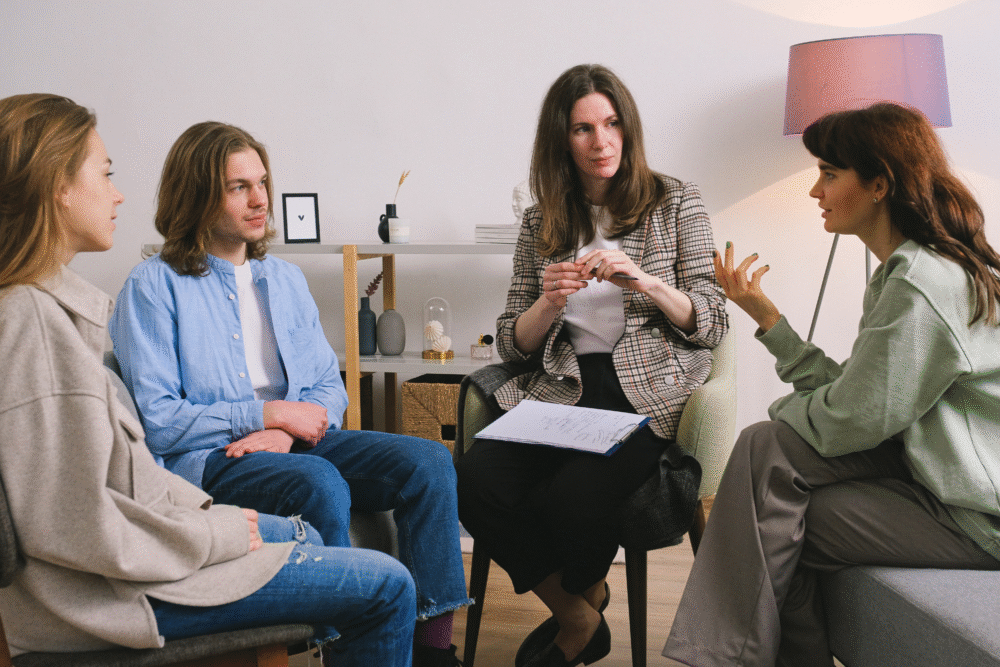Two generations seek healing but through very different lenses.

Therapy isn’t new, but the way people approach it shifts with culture, technology, and expectations. Gen Z and Gen X both grapple with stress and trauma, yet their therapeutic landscapes look worlds apart. Understanding these differences reveals how healing evolves alongside society.
Here are nine contrasts showing how therapy has transformed between the Gen X experience and the Gen Z approach—and what that says about mental health today.
1. Gen Z normalizes therapy, while Gen X hides it.

For Gen X, therapy was often whispered about, reserved for crises. Stigma made it feel like weakness. Gen Z treats therapy like dental checkups—routine and preventive.
This openness creates a healthier baseline. By normalizing therapy, Gen Z strips shame away, making help-seeking proactive instead of reactive.
2. Digital platforms make therapy accessible for Gen Z.

Gen Z leans on apps, video calls, and chat-based therapy. Sessions fit into busy schedules and offer anonymity. Gen X relied on in-person appointments, often limited by geography.
This digital shift expands reach. Therapy no longer requires commutes or waiting rooms, making it more adaptable to modern lifestyles.
3. Gen Z emphasizes identity, Gen X emphasized survival.

Therapists for Gen X often focused on coping with work, marriage, or parenting. Gen Z brings discussions of gender, sexuality, and identity to the forefront.
This shift highlights evolving priorities. Therapy now addresses self-expression alongside traditional stability, showing how culture shapes conversation.
4. Language of mental health is broader for Gen Z.

Terms like burnout, gaslighting, and boundaries circulate freely among Gen Z. Gen X grew up without common vocabulary to describe these experiences.
Words change worlds. Gen Z’s fluency in mental health terms gives them tools Gen X lacked, enabling earlier recognition and intervention.
5. Social media amplifies therapy conversations.

For Gen Z, TikTok and Instagram make therapy-adjacent content widespread. Gen X relied on books, talk shows, or word-of-mouth for insights.
While accuracy varies, this flood of content normalizes mental health talk. Gen Z often arrives at therapy already familiar with concepts their parents never heard until adulthood.
6. Gen Z therapists often match client demographics.

Younger therapists bring cultural context Gen Z values—shared slang, digital fluency, and awareness of modern pressures. Gen X often saw therapists much older than themselves.
That generational closeness builds trust faster. Therapy feels less clinical and more collaborative, matching the conversational style Gen Z prefers.
7. Gen Z values flexibility, Gen X valued formality.

Gen Z expects text reminders, session rescheduling, and casual clothing in therapy spaces. Gen X faced stricter office hours and more formal dynamics.
This relaxed approach reduces intimidation, encouraging consistency. Therapy becomes less of an appointment and more of an integrated practice.
8. Medication conversations look different.

Gen X often approached medication reluctantly, worried about stigma or long-term consequences. Gen Z tends to view medication as one tool among many, integrated into broader care.
This openness stems from cultural shifts and better education. It reframes medication from failure to support.
9. Community-driven healing complements therapy for Gen Z.

Gen Z often supplements therapy with group chats, online forums, and peer support. Healing feels collective, not solitary. Gen X typically kept therapy private.
This community emphasis reshapes the process. Mental health becomes something shared, destigmatized, and reinforced through everyday interactions.
